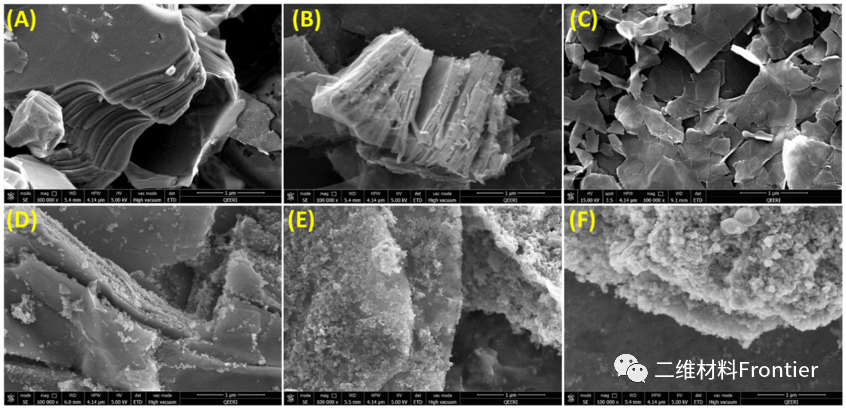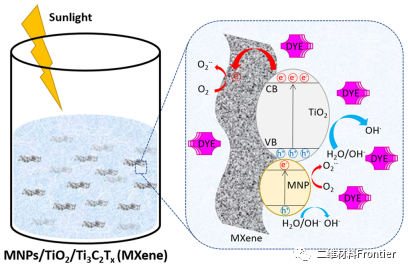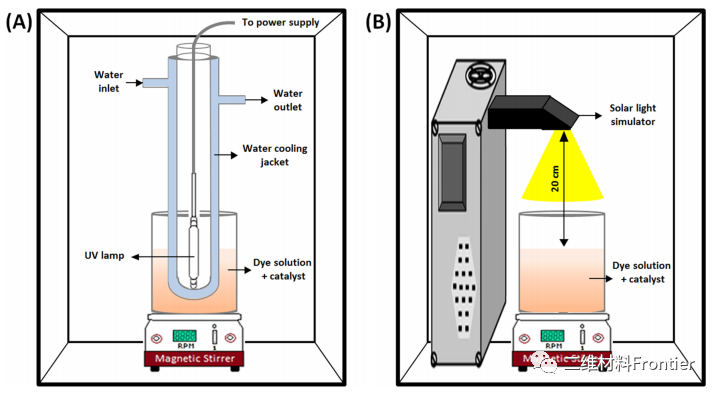ACS Omega: Efficient photocatalytic degradation of organic dyes by AgNPs/TiO2/Ti3C2Tx MXene composites under UV and solar light
QQ Academic Group: 1092348845
Detailed
1. Article overview
Due to the wide application of organic dyes in various industrial activities and their well-known negative effects on the aquatic environment, organic dyes have been continuously identified as a serious threat to the quality of the ecosystem. The photocatalytic degradation process in aqueous solution has become an efficient and reliable method to remove organic dyes. MXenes is a new type of two-dimensional nanomaterial with unique chemical composition, surface function and physical and chemical properties. This feature enables McMerene to be used as an effective catalyst or co-catalyst to photodegrade organic molecules. This study explored the application of Ti3c2TxMXene modified with silver and palladium nanoparticles using a simple hydrothermal treatment method in the photocatalytic degradation of methylene blue and rhodamine B. The photocatalytic degradation ability of the original MXene and synthetic MXene composite materials under ultraviolet light and sunlight was studied. Compared with the original MXene, the photocatalytic performance of all oxidized MXene composite materials has been significantly improved, and AgNPs/TiO2/Ti3C2Tx has a higher degradation efficiency. This work broadens the application range of oxidized MXene composites and provides an alternative material for the application of degradation of organic dyes and wastewater treatment.
2. Graphic guide

Figure 1. (A) Ti3AlC2MAX phase, (B) ML-Ti3C2TxMXene, (C)DL-Ti3C2TxMXene, (D)TiO2/Ti3C2Tx, (E)PdNPs/TiO2/Ti3C2T2Tx and (F)AgNPs/TiO2/Ti3C2Tx photocatalyst Scanning electron microscope image.

Figure 2. TEM images of (A)TiO2/Ti3C2Tx, (B)PdNPs/TiO2/Ti3C2Tx and (C)AgNPs/TiO2/Ti3C2Tx.

Figure 3. The schematic diagram illustrates the different potential mechanisms of the photo-induced charge transfer process of Ti3c2TxMXene modified with metal oxide (TiO2) and precious metal nanoparticles (MNP).

Figure 4. Schematic diagram of the photocatalytic degradation device, under solar simulator (A) and under ultraviolet light (B).
3. Full text summary
In summary, research of the author has proved a simple one-pot hydrothermal method to prepare MXene composites modified with transition metal nanoparticles (TiO2/Ti3C2Tx, AgNPs/TiO2/Ti3C2Tx and PdNPs/TiO2/Ti3C2Tx). The structure of the nanocomposite confirmed the stable formation of MNPs/TiO2/Ti3C2Tx, and these TiO2 particles nucleated on the surface of MXene. In addition, the results show that AgNPs/TiO2/Ti3C2Tx photocatalyst has superior performance, which is mainly attributed to the positive effects of anatase TiO2 and silver particles in enhancing light trapping, dye adsorption and charge separation. Under similar experimental conditions, the degradation efficiency of AgNPs/tio2/ti3c2Tx on MB and RhB is higher than most previously reported photocatalysts, and the total organic carbon is reduced by 23% after treatment of industrial wastewater, confirming its remarkable performance. The AgNPs/TiO2/Ti3C2Tx composite material has been proven to be a promising solar light-based wastewater treatment material due to its simple preparation and high photocatalytic performance.
This information is sourced from the Internet for academic exchanges only. If there is any infringement, please contact us to delete it immediately.
- Previous: MXene aerogel prepared
- Next: MXene breakthrough: Na


 mxene academic
mxene academic